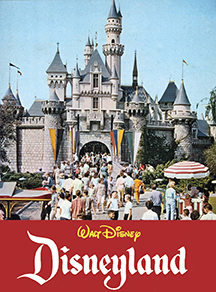Plastic Fantastic Living
 |
|
|
It was a house of many wonders and many names.
Back in the mid-century, it was officially the ‘Monsanto House of the Future’—but nicknames quickly followed. The ‘experimental house,’ the ‘push-button house,’ the ‘airborne house’—and there were more.
The House of the Future, erected at Disneyland’s Tomorrowland, caught everyone’s fancy. People flocked to see it—thousands a day, day after day, for almost ten years—until more than 20 million people had visited.
Although purportedly designed as a scientific investigation into how plastics could be used to produce inexpensive, mass-produced housing, the House of the Future was more than that. It was a dream.
Little Wendy Stuart, all of 11, who visited the house the day before it opened to the public, understood that right away. “Gosh, I must be dreaming,” she said, after touring the home. The organizers of the event gave Wendy the key to the house and named her ‘the housewife of the future.’
The reporter covering the event called the house “a forerunner of the dwelling the typical American family of four may be living in ten years from now.”
 |
Dreams, of course, rarely come true. But the tale of the House of the Future, which remained on display from 1957 to 1967, says much about that era’s faith in science and technology to solve human problems.
It also says a bit about good old American hucksterism.
The dream began, prosaically enough, with the men in Monsanto’s chemicals division wondering ‘how can we sell more plastic?’ It was a dream material, Monsanto knew—so why weren’t people building houses of it?
Plastic, Monsanto noted, could be molded into any shape, readily mass-produced, was lightweight, needed little maintenance, and came with its own integral color.
They claimed the house would ride out earthquakes—and resist corrosion and termites. “They’d wear their teeth out on this place,” Monsanto engineer Robert Whittier told the press.
In May 1954, according to a technical report produced by Massachusetts Institute of Technology, Monsanto Chemical Co. approached MIT’s architecture school in Cambridge “with the idea of having them design a house of plastics.” Monsanto also offered funding.
The school’s dean, Pietro Belluschi, deemed the idea “both exciting and worthy of investigation.”
Belluschi was known for experimentation with new materials and structural forms. Among his buildings are St. Mary’s Cathedral In San Francisco, with its soaring reinforced concrete interior, and the multi-level ‘Life house’ he designed for Joe Eichler in the San Mateo Highlands.




